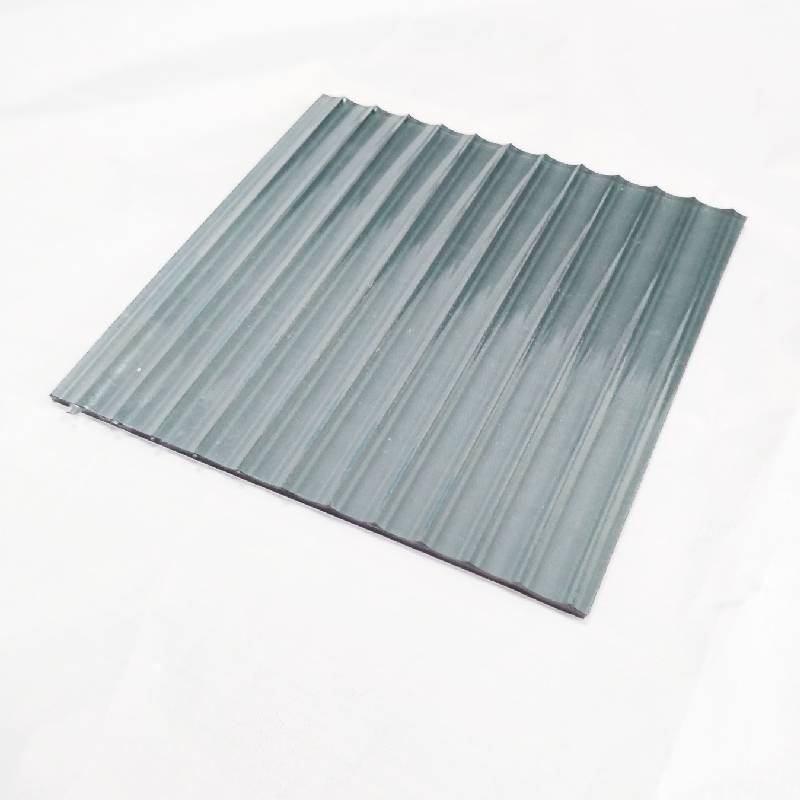Understanding Tempered Glass Composition and Benefits
Tempered glass, also known as toughened glass, is a type of safety glass that has been treated to increase its strength compared to standard glass. This sophisticated manufacturing process involves heating the glass to a high temperature and then rapidly cooling it, which enhances its overall durability. One of the most commonly asked questions about tempered glass is about its composition. What materials are used to create this sturdy material, and what makes it ideal for various applications?
At its core, tempered glass is typically made from silica sand, soda ash, and limestone, much like standard glass. However, the key to its enhanced strength lies in the additional materials that are sometimes included in the production process. These may include alumina, which helps to improve thermal stability, and magnesium oxide, which increases the glass's resistance to thermal shock. The precise composition can vary based on the specific requirements of the application, ensuring that the glass meets the necessary mechanical and thermal performance metrics.
Understanding Tempered Glass Composition and Benefits
Once the glass has been shaped, the tempering process begins. It involves heating the glass sheets to temperatures between 600 to 700 degrees Celsius (approximately 1112 to 1292 degrees Fahrenheit). After reaching the required temperature, the glass is rapidly cooled using powerful jets of air. This quenching process creates a layer of compressive stress on the surface of the glass. As a result, tempered glass is designed to endure greater impacts and thermal fluctuations than its non-tempered counterparts.
tempered glass made of
One of the most significant advantages of tempered glass is its safety feature. When shattered, tempered glass breaks into small, blunt pieces rather than sharp shards. This minimizes the risk of injury, making it a preferred choice for environments where safety is a top priority, such as in shower doors, glass doors, windows, and even in vehicles. Moreover, its thermal resistance makes it suitable for applications that involve high heat, such as in oven doors and glass table tops.
In addition to safety and thermal resistance, tempered glass is also aesthetically pleasing. It can be produced in various colors and finishes, allowing it to enhance the visual appeal of any space. Designers and architects favor tempered glass for its combination of safety, durability, and elegance.
Furthermore, as energy efficiency becomes increasingly important in modern construction, tempered glass can also contribute to better insulation. When used in double or triple-glazed setups, it helps improve the energy efficiency of buildings by reducing heating and cooling costs.
In conclusion, tempered glass is a remarkable material made primarily from silica, soda ash, and limestone, with enhancements from other additives for improved thermal and mechanical strength. Its unique manufacturing process not only increases safety and durability but also expands its applications across various industries. Whether in architecture, automotive design, or everyday applications, tempered glass is truly a versatile and essential material in today's world, providing both functionality and aesthetic appeal.
 Afrikaans
Afrikaans  Albanian
Albanian  Amharic
Amharic  Arabic
Arabic  Armenian
Armenian  Azerbaijani
Azerbaijani  Basque
Basque  Belarusian
Belarusian  Bengali
Bengali  Bosnian
Bosnian  Bulgarian
Bulgarian  Catalan
Catalan  Cebuano
Cebuano  Corsican
Corsican  Croatian
Croatian  Czech
Czech  Danish
Danish  Dutch
Dutch  English
English  Esperanto
Esperanto  Estonian
Estonian  Finnish
Finnish  French
French  Frisian
Frisian  Galician
Galician  Georgian
Georgian  German
German  Greek
Greek  Gujarati
Gujarati  Haitian Creole
Haitian Creole  hausa
hausa  hawaiian
hawaiian  Hebrew
Hebrew  Hindi
Hindi  Miao
Miao  Hungarian
Hungarian  Icelandic
Icelandic  igbo
igbo  Indonesian
Indonesian  irish
irish  Italian
Italian  Japanese
Japanese  Javanese
Javanese  Kannada
Kannada  kazakh
kazakh  Khmer
Khmer  Rwandese
Rwandese  Korean
Korean  Kurdish
Kurdish  Kyrgyz
Kyrgyz  Lao
Lao  Latin
Latin  Latvian
Latvian  Lithuanian
Lithuanian  Luxembourgish
Luxembourgish  Macedonian
Macedonian  Malgashi
Malgashi  Malay
Malay  Malayalam
Malayalam  Maltese
Maltese  Maori
Maori  Marathi
Marathi  Mongolian
Mongolian  Myanmar
Myanmar  Nepali
Nepali  Norwegian
Norwegian  Norwegian
Norwegian  Occitan
Occitan  Pashto
Pashto  Persian
Persian  Polish
Polish  Portuguese
Portuguese  Punjabi
Punjabi  Romanian
Romanian  Russian
Russian  Samoan
Samoan  Scottish Gaelic
Scottish Gaelic  Serbian
Serbian  Sesotho
Sesotho  Shona
Shona  Sindhi
Sindhi  Sinhala
Sinhala  Slovak
Slovak  Slovenian
Slovenian  Somali
Somali  Spanish
Spanish  Sundanese
Sundanese  Swahili
Swahili  Swedish
Swedish  Tagalog
Tagalog  Tajik
Tajik  Tamil
Tamil  Tatar
Tatar  Telugu
Telugu  Thai
Thai  Turkish
Turkish  Turkmen
Turkmen  Ukrainian
Ukrainian  Urdu
Urdu  Uighur
Uighur  Uzbek
Uzbek  Vietnamese
Vietnamese  Welsh
Welsh  Bantu
Bantu  Yiddish
Yiddish  Yoruba
Yoruba  Zulu
Zulu 

